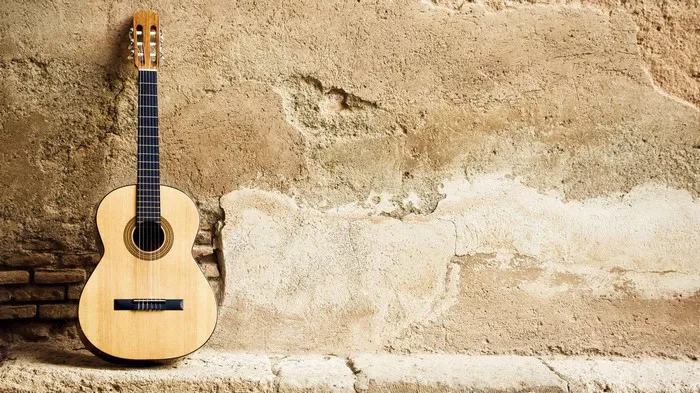The dive bomb technique is one of the most thrilling and iconic sounds a guitar can produce. Known for its dramatic pitch shifts and ability to evoke a sense of chaos or intensity, this technique is a staple in rock, metal, and experimental genres. Whether you’re inspired by guitar legends like Eddie Van Halen or Dimebag Darrell, mastering the dive bomb can elevate your playing to new heights. In this article, we’ll dive deep into what it takes to execute and perfect this technique.
Understanding the Dive Bomb Technique
A dive bomb involves using a guitar’s whammy bar to lower the pitch of a note or chord dramatically. The sound can range from a subtle vibrato to a deep, roaring drop, depending on the depth of the pitch bend. It’s a technique that’s heavily reliant on equipment, setup, and precision.
Essential Equipment for Dive Bombing
To achieve the best results, you’ll need the right gear. Here’s a breakdown of what you should have:
1. A Guitar with a Tremolo System
A dive bomb requires a tremolo system capable of significant pitch bends. Here are the most common types:
Floyd Rose Tremolo: This double-locking system is the gold standard for dive bombs. It offers exceptional tuning stability, even after extreme bends.
Vintage-Style Tremolo: Found on many Stratocasters, this can be used for dive bombs but may not stay in tune as well as a Floyd Rose.
Floating Tremolo Systems: These allow both upward and downward pitch bends, making them versatile for dive bombs.
2. Heavy-Gauge Strings
Dive bombing puts immense stress on strings. Heavier-gauge strings are less prone to snapping during aggressive use.
3. High-Gain Amplifier
To amplify the dramatic effect of a dive bomb, you’ll want a high-gain amp. This adds sustain and distortion, emphasizing the impact of the technique.
4. Proper Setup
Ensure your guitar is properly intonated and that the tremolo system is adjusted for smooth operation. A poorly set up tremolo can result in tuning issues or limited range.
Step-by-Step Guide to Dive Bombing
1. Tuning and Preparation
Start by tuning your guitar and locking it (if using a Floyd Rose system). Test the tremolo system to ensure it moves freely without resistance or sticking.
2. Choosing the Right Note
Select a note on the lower strings, as they provide more depth and resonance. For maximum effect, choose a note higher on the fretboard, as this will create a more pronounced pitch drop.
3. Engaging the Whammy Bar
After picking the note, grip the whammy bar and push it down slowly to lower the pitch. To create a smooth and dramatic dive bomb, maintain steady pressure.
4. Adding Harmonics
For a classic dive bomb, you can incorporate harmonics. Lightly touch the string at a natural harmonic point (e.g., the 5th or 12th fret) before engaging the whammy bar. The resulting sound will be a screeching, otherworldly effect.
5. Releasing the Whammy Bar
Once you’ve reached the desired pitch drop, slowly release the whammy bar to return to the original pitch. For added drama, you can let the note fade out completely before releasing.
Tips for Perfecting the Dive Bomb
1. Practice with Dynamics
Experiment with how hard or soft you push the whammy bar. A gentle push creates subtle effects, while a full dive can mimic the sound of a jet engine.
2. Experiment with Vibrato
After the dive bomb, use the whammy bar to add vibrato. This adds a finishing touch and showcases control over the technique.
3. Combine with Other Techniques
Integrate dive bombs with slides, bends, or tapping for a unique flair. For instance, executing a slide into a dive bomb can mimic the sound of falling objects or an accelerating motorcycle.
4. Explore Different Harmonics
Try artificial harmonics or pinch harmonics in combination with dive bombs. Each harmonic creates a unique tonal quality that can transform the sound.
Common Challenges and Solutions
1. Tuning Stability
Dive bombs can pull strings out of tune. To counter this:
- Use locking tuners or a Floyd Rose system.
- Lubricate the nut with graphite or a specialized lubricant.
2. String Breakage
The stress of dive bombing can break strings, especially thinner ones. Opt for heavier gauges and replace old strings regularly.
3. Tremolo Resistance
If the tremolo system feels stiff, it may need adjustment. Check the springs in the guitar’s cavity and adjust their tension to balance the system.
Famous Dive Bomb Techniques
1. The Classic Drop
Popularized by Eddie Van Halen, this involves a straightforward pitch drop, emphasizing power and drama.
2. The Squeal Bomb
Used by Dimebag Darrell, this combines a pinch harmonic with a dive bomb, creating a piercing, screaming effect.
3. Reverse Dive Bomb
Instead of lowering the pitch, pull the whammy bar up to raise the pitch before releasing it downward. This creates a swooping sound that adds tension.
Songs to Practice Dive Bombing
Here are some iconic tracks that feature dive bombs:
“Eruption” by Van Halen: A masterclass in whammy bar techniques, including dive bombs.
“Walk” by Pantera: Features Dimebag Darrell’s signature squeal bombs.
“For the Love of God” by Steve Vai: A showcase of melodic dive bombs.
Conclusion
Beyond technical mastery, dive bombing is an art form. It’s not just about the sound—it’s about the emotion and story you convey. Dive bombs can signify chaos, excitement, or even melancholy, depending on how they’re executed.
Dive bombing on the guitar is a thrilling way to add personality and flair to your playing. With the right gear, practice, and creativity, you can master this technique and make it your own. Whether you’re shredding on stage or recording in the studio, the dive bomb is sure to captivate audiences and elevate your sound. Embrace the chaos, and let your guitar roar like never before.
Related Topics
- What Are the Chords on a 6 String Guitar?
- What is a Triad on Guitar?
- How Many Types of Guitar Scales Are There


